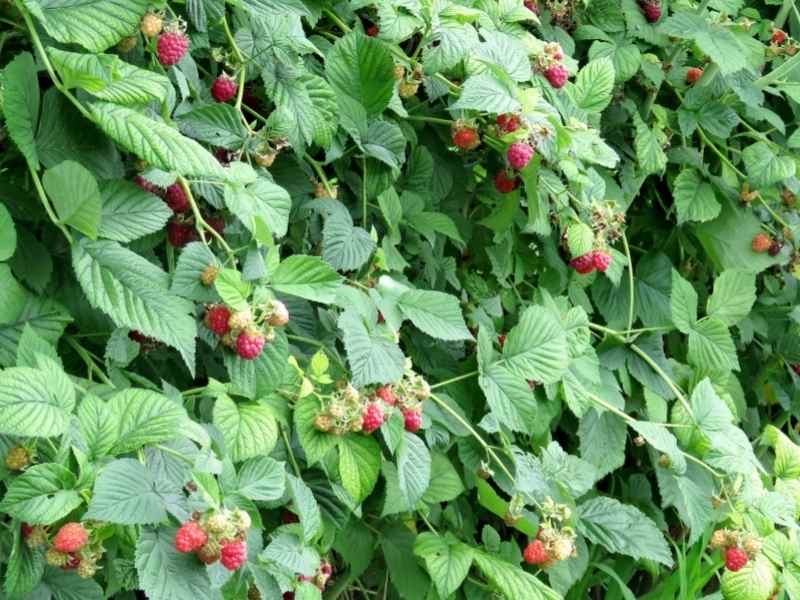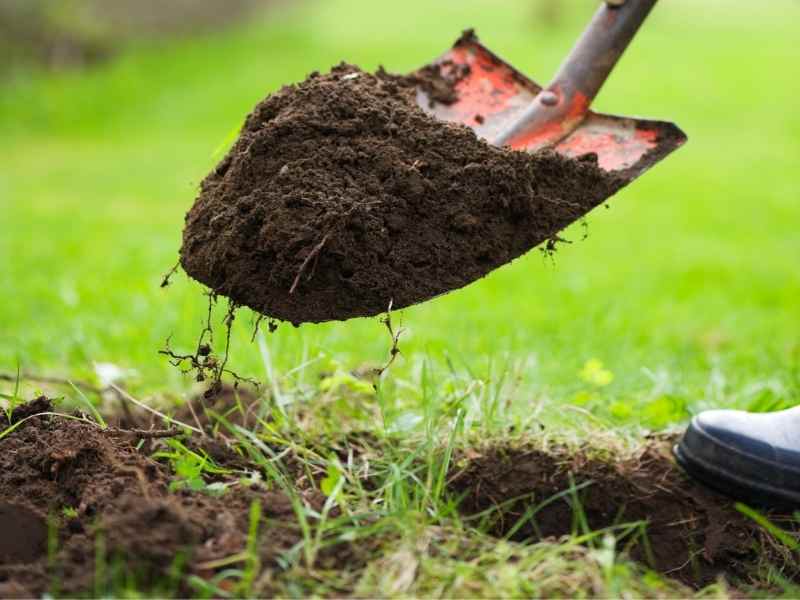Raspberry bushes are best planted in the spring in a place where they will get plenty of sunshine. They need nutrient rich soil and plenty of hydration during the summer months.
Raspberries are a delicious fruit, and fortunately they are one of the easiest types of fruit that you can plant in your own backyard.

Best Time to Plant
The best time to plant raspberry bushes is in the late spring. However, you can still plant them at nearly any time of near when the ground is not frozen solid.
You should keep in mind that it will take a long time for the raspberry bushes to actually grow any fruit on them. You will not be able to get any fruit until the following year if they are second year branches. If they are first year branches, you will not get any fruit until the fall.
Best Soil Conditions
Raspberry bushes need to have rich soil that has been well drained. You want to have a roughly even mix of soil and compost. You should also make sure that you go ahead and till the soil very well before you start planting your raspberry bushes.
These soil conditions will create the best environment for your raspberry bushes to grow and prosper.
Ideal Locations
Raspberry bushes need to be able to grow in full direct sunshine. They need to get at least six to eight hours of sunshine every day in well drained soil. Make sure that you carefully do your research to know if raspberry bushes are plants that can grow in your region.
Raspberries are a plant that is self-fertile. This means that you do not need to plant any other varieties of raspberry plant in order for the bushes to keep pollinating each other.
The best location to grow raspberry bushes in is in a straight line at the edge of your property. This is because they need strong support and plenty of space.
You should be careful to avoid planting raspberry bushes in the same place that you are growing plants such as tomatoes, peppers, or other nightshade plants such as eggplant. These plants are known to carry a disease called the harbor verticillium wilt. This is a disease that can kill your raspberry bushes if it spreads.
Best Planting Practices
You should make sure you leave at least three or four feet of space between each raspberry bush that you plant. Most raspberry bushes are actually sold as plants with bareroots.
To plant these, the first thing that you need to do is to soak the plants in lukewarm water for an hour or so. After this, you should go and dig a hole that is twice as wide and roughly as deep as the length of the raspberry bush roots.
You should try to create an even blend of the soil that you removed from the hole and compost-enriched ground soil with nutrients. This will add nutrients to the soil to help your raspberry bushes thrive and survive.

You should place the raspberry bush plant in the hole that you have dug and fill in the soil around it to fill up the rest of the space in the hole. After you have planted the raspberry bushes, you need to make sure that you water them well.
Staking Raspberry Bushes
Giving your raspberry bushes strong and sturdy support will help them to grow properly.
The simplest way that you can do this is to create a post and wire system. You can construct t-posts out of a couple of crossbars. One of these should be vertical and the other one should be horizontally in the middle.
You should go ahead and place these t-posts every five feet or so along the length of the raspberry bushes that you are planning to grow. You can create a lattice system for your bushes by running wires between the crossbars.
By doing this, you are able to keep your raspberry bushes off of the ground and contained from each other.
Watering Your Raspberry Bushes
It is absolutely critical that you keep your raspberry bushes well hydrated during the summer months. You should check the plants frequently and make sure you add more water to them whenever the top inch of soil starts to feel dry.
A good way to give your raspberry bushes steady moisture is to set up a drip irrigation system or to use a soaker hose. If this isn’t an option then mulching around your raspberry bushes will help the soil to retain moisture.

You need to give them plenty of water during the summer, but you should avoid watering them during the winter months. If you give them water during the winter, this can cause the roots of your raspberry bushes to start rotting away in the ground.
Pruning Your Raspberry Bushes
Your raspberry bushes will not produce fruit until the following spring after you plant them if they are second year branches. If they are first year branches, they will start to produce their fruit in the fall after you plant them.
A first year branch will produce fruit only at the end of the branch, while a second year branch will produce fruit all along the branch. You should prune the first year branches to roughly three feet tall in the spring. You should prune second year branches to the ground after you harvest the fruit.

Harvesting Fruit from Your Raspberry Bushes
This is the easy part. Once your raspberry bushes have started to fruit, you can just pick the fruit off of the branches. You should wait until they are ripe and then pick them off one at a time. You will need to harvest them every day once the fruit starts getting ripe.
You can keep them in your fruit for a few days after you pick them.
Final Thoughts
Raspberry bushes are a delicious fruit bearing plant that you can grow in your own backyard. They need nutrient rich soil and plenty of sunshine. They also need lots of room to grow and frequent hydration.



